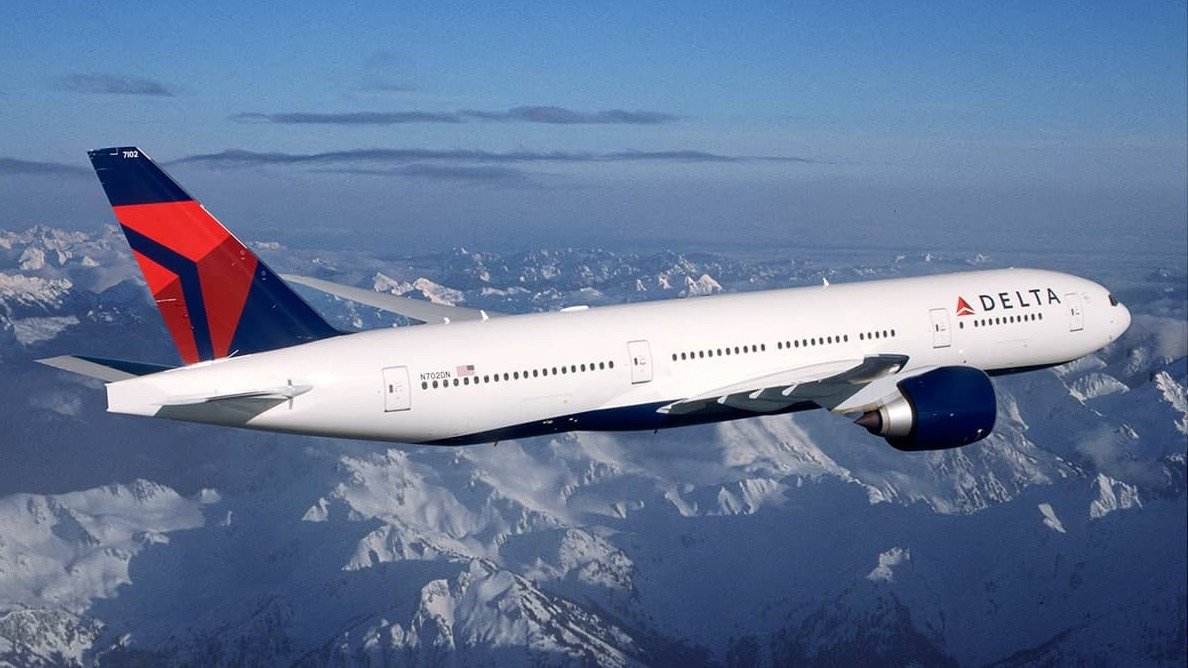A Routine Journey Takes an Unexpected Turn
Every flight carries with it the expectation of reaching its destination safely and on time. But sometimes, things don’t go as planned. Such was the case when Delta Flight DL275 diverted LAX, transforming a seemingly uneventful long-haul flight into an incident that drew attention from passengers and aviation experts alike. Though diversions are rare, they are not unheard of—and when they happen, they reveal just how much preparation goes into ensuring passenger safety.
Inside the Story of Delta Flight DL275
Delta Flight DL275 typically operates on international long-haul routes, such as Detroit to Tokyo, Atlanta to Seoul, or Los Angeles to various major international destinations. These flights are operated using widebody aircraft like the Airbus A350 or Boeing 777, which are equipped for endurance, comfort, and performance over transoceanic distances.
On this particular day, the flight was progressing normally until something prompted the flight crew to change course. The decision was made swiftly and precisely: Delta Flight DL275 diverted LAX, an airport known for its capacity to handle large aircraft and complex operations.
What May Have Caused the Diversion?
Delta Air Lines did not immediately provide an official reason for the diversion, which is standard in many such situations. However, data from flight trackers, along with unconfirmed accounts from passengers, pointed to two potential causes: either a medical emergency on board or a technical alert from the aircraft systems. In either case, continuing the flight to its original destination was not deemed safe or practical.
LAX was selected because of its excellent infrastructure, on-site emergency medical services, and Delta’s operational capacity at the airport. When you see reports like Delta Flight DL275 diverted LAX, it’s often a sign that the crew made a proactive choice to prioritize safety over schedule.
The Most Likely Scenarios Behind the Diversion
Flight diversions generally occur due to medical needs, mechanical issues, severe weather, or security-related threats. In the context of DL275, the first two seem most probable. Medical diversions are taken very seriously—if a passenger or crew member suffers a medical episode, time becomes a critical factor. Likewise, technical diversions, even for non-catastrophic issues, are executed out of caution. Anomalies in aircraft sensors or irregular readings in systems are often more than enough reason to land early.
With either cause, choosing LAX made logistical sense. It’s a major international hub, fully capable of accepting a widebody aircraft with minimal disruption to other operations.
Behind the Flight Deck Doors: How Diversions Are Decided
When a situation arises mid-flight, the cockpit becomes a center of high-stakes decision-making. The pilot-in-command consults not only with the first officer but also with Delta’s operations center, using live data feeds and satellite communications. ATC (Air Traffic Control) is notified, and a diversion route is charted, taking into consideration weather, distance, fuel status, and available airport facilities.
Once the decision is made, the crew’s responsibility shifts to execution and communication. In this case, as soon as it became clear that Delta Flight DL275 diverted LAX, coordination between flight operations and ground personnel at LAX would have kicked into high gear to prepare for its arrival.
Communicating with Passengers During In-Flight Changes
Passengers may not always know the technical details, but they do sense when something isn’t right. The cabin crew plays a vital role in keeping passengers calm and informed. A well-handled diversion includes clear announcements, transparency about delays, and instructions on what to expect after landing. According to reports, the crew aboard DL275 maintained professionalism and composure, easing tension among those onboard.
Diversions can be particularly stressful for international travelers, who may worry about missed connections, visa issues, or overnight stays. Effective communication goes a long way in preserving trust and minimizing panic.
What Happens on the Ground After a Diversion
Upon landing at LAX, the diverted flight would have been met by the appropriate response teams. If the cause was medical, paramedics would board the plane immediately. If technical, maintenance crews would begin diagnostics while the aircraft remained on the ground.
Whether passengers disembarked would depend on the nature and duration of the delay. In some cases, flights resume after refueling or a quick repair. In others, passengers are rebooked or accommodated overnight. Because this was a major international flight, it’s likely that Delta provided support such as hotel stays and meal vouchers.
How Delta Supports Passengers After an Unexpected Landing
Delta has established customer care protocols for dealing with service interruptions. These include same-day or next-day rebooking, lodging and transportation when necessary, and in some cases, travel vouchers or SkyMiles compensation. When situations like Delta Flight DL275 diverted LAX occur, the goal is to help affected passengers continue their journey with as little disruption as possible.
Even though a diversion disrupts the itinerary, passengers often report appreciation for how well the airline handles it, particularly when it’s clear that safety is the top priority.
Why Flight Diversions Remain the Exception, Not the Rule
Commercial aviation is remarkably safe and consistent. Less than 1% of all commercial flights are diverted, thanks to modern technology, reliable aircraft, and advanced weather tracking. Still, pilots and airlines prepare extensively for rare moments when something does go wrong.
Training simulations, emergency procedures, and partnerships with international airports are all part of this preparedness. The smooth handling of events like Delta Flight DL275 diverted LAX is a testament to that preparation.
The Aviation Industry’s Biggest Lesson: Be Ready for Anything
One clear takeaway from the DL275 incident is the importance of adaptability. No amount of planning can predict every possible scenario, but good planning allows airlines and airports to respond effectively.
From cockpit decision-making to customer service on the ground, each part of the system must function in harmony. The professionalism of Delta’s team and the readiness of LAX played a crucial role in ensuring the incident was resolved without chaos or confusion.
LAX: The Right Airport at the Right Time
Los Angeles International Airport isn’t just one of the busiest airports in the world—it’s also one of the most equipped for handling flight diversions. With multiple long runways, 24/7 emergency services, and customs processing for international travelers, LAX was an ideal alternate landing site.
It’s no accident that Delta Flight DL275 diverted LAX. The infrastructure, personnel, and coordination available at the airport make it a top-tier location for unscheduled landings of long-haul flights.
The Role of Crew Training in Emergency Preparedness
A flight crew’s ability to handle emergencies comes down to rigorous training and simulation. From handling medical situations mid-air to diagnosing early signs of mechanical anomalies, crews undergo continuous education. The DL275 diversion showcases how this training translates into real-world readiness. Whether it’s rerouting flight paths or coordinating with emergency medical teams, trained crews are a cornerstone of passenger safety.
How Social Media Amplifies Real-Time Flight Events
In today’s digital world, passengers often turn to platforms like Twitter or Reddit during such events. News of Delta Flight DL275 diverted LAX quickly circulated online, with live updates, videos, and photos. This real-time reporting adds a new layer of public scrutiny—and transparency—making it even more important for airlines to manage communication effectively.
What Passengers Can Do During Diversions
While the airline handles logistics, passengers can also take steps to stay informed and calm. Keeping travel insurance up to date, knowing your rights, and staying patient can all make a big difference. Apps like FlightAware or the Delta app provide instant updates, helping travelers adapt quickly.
Final Thoughts: A Safe Ending to an Unplanned Chapter
The story of Delta Flight DL275 diverted LAX may have started with uncertainty, but it ended with reassurance. It reminds us that in aviation, decisions are made with care, grounded in data, and focused on protecting lives.
While passengers may remember the inconvenience, they’re more likely to remember how well the situation was handled. And that’s the heart of what makes commercial aviation one of the safest modes of travel in the world.
Flight DL275’s diversion is not just an isolated event—it’s a case study in preparedness, professionalism, and the unshakable priority of safety above all else.




